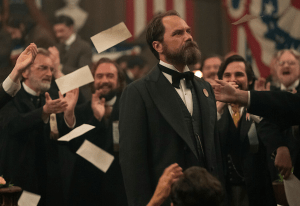Spider-Man: No Way Home finally swings into theaters this weekend, bringing the latest chapter of the cinematic story of Spider-Man to life. As much as the film is culminating the onscreen story of Tom Holland’s Peter Parker, it’s also making many look back at where Spider-Man came from, both on the big screen and in the pages of Marvel Comics. While the marketing for No Way Home has showcased a number of flashy villains and nods to Marvel lore, one element of the larger Spider-Man mythos has made itself apparent — the fact that, at its core, the decades-long saga of Peter Parker’s Spider-Man is at its best when it is rooted in a love story.
Videos by ComicBook.com
When Spider-Man first made his debut in 1962’s Amazing Fantasy #15, the world of mainstream comics was in a unique place. While the Golden Age of superhero titles had ebbed and flowed in popularity around that time — in part thanks to the moral panic that led to the creation of the Comics Code Authority in the 1950s — certain genres had found ways to flourish. Among them was the world of romance comics, which had been kickstarted in 1947 with Joe Simon and Jack Kirby’s Young Romance, and had endured (albeit to a more chaste extent) in a number of titles in a post-Code landscape. By the 1960s, romance and slice-of-life comics had carved out a place in the comics world, in part because they attempted to showcase a more realistic look at the life of its youthful protagonists, with love triangles and teenage longing galore.
In a roundabout way, that slice-of-life romance approach bled into the foundation of Spider-Man’s early years in comics, particularly with the introduction of both Gwen Stacy and Mary Jane Watson in 1965. Despite the outrageousness of his early career as Spider-Man, both women came into Peter’s life in relatively mundane ways — Gwen was a whip-smart college classmate of Peter’s, and MJ was the bombshell “girl next door” that Aunt May constantly hoped to set Peter up with. To an extent, part of why Peter became popular in comics was his “everyman” status, and his ability to resonate with both young and veteran comic book readers as he balanced superheroics with the average tropes of high school and college. If the Marvel universe truly is the “world outside our window”, the romantic antics of its protagonist navigating young adulthood — with two wildly different, but compelling women in his orbit — was about as ubiquitous as comics could get in the 60s.
Even outside of Gwen and MJ, Peter’s antics continued in the decades that followed, as he had romantic moments with civilian women like Betty Brandt and Liz Allan, femme fatales-turned-crimefighters like Black Cat, Silver Sable, and Mockingbird, and many others as well. While those dynamics spanned everything from puppy love to sexual tension to genuine romance, they still proved to be significant and memorable in the tapestry of Peter’s story. The very nature of Peter’s “true love” is still debated to this very day, with fans and even creatives at Marvel Comics having wildly different answers depending on which era of comics they love the most.
Beyond the day-to-day of Peter Parker’s life, romance has also factored into a number of the status quo-shattering events, many of which have become so iconic that they’re still spoken about and reprinted all these years later. 1973’s “The Night Gwen Stacy Died” infamously shifted Peter’s approach to being a hero, after his actions couldn’t save Gwen from being killed at the hands of the Green Goblin. Fifteen years later, The Amazing Spider-Man Annual #21 brought to life Peter’s wedding to MJ, to a degree that was so highly-publicized that it was even physically performed during an event at Shea Stadium. That wedding — both positively and negatively — would bleed over into 2008’s “One More Day”, which controversially attempted to retcon it out of existence. Heck, romance and love factored so heavily into Peter’s world that even a 1974 wedding between his aunt and one of his greatest enemies remains among the iconic covers of Amazing Spider-Man.
It’s not just the comics that have strongly developed Peter Parker’s romantic history, but the several decades of live-action movies as well. Sam Raimi’s Spider-Man trilogy arguably centered around the love story of Tobey Maguire’s Peter and Kirsten Dunst’s Mary Jane, giving audiences the full arc from their unlikely high school courtship to the rekindling of their relationship as adults, complete with an upside-down kiss in the rain that has become one of the most ubiquitous images in comic book films. MJ played such an important role in the trilogy that large swaths of the latter films revolved around her own emotions and trajectory in life, adding depth to what would’ve otherwise been a very traditional damsel in distress role.
The Amazing Spider-Man films (although they did almost introduce an MJ) elected to focus on Andrew Garfield’s Peter in a budding, earnest romance with Emma Stone’s Gwen Stacy; it was a decision that, to many viewers, ended up being the highlight of the films. Even as the second Amazing Spider-Man film essentially sped through comic lore to end on Gwen’s tragic death, the significance of their brief time onscreen together resonated with viewers and drudged up a lot of fans’ unresolved feelings regarding her original demise.
In more recent years, 2018’s animated blockbuster Spider-Man: Into the Spider-Verse included a surprisingly-poignant subplot of Peter processing his separation from his Earth’s MJ, as he crossed paths with her doppelganger in the multiverse. The current Marvel Cinematic Universe trilogy of films have also, in their own way, dealt with the romantic possibilities of Tom Holland’s Peter — first with his crush on Liz Allan, which turned the nerve-wracking trope of “meeting the in-laws” on its head by making her father the antagonistic Vulture in Spider-Man: Homecoming. The tail-end of that film set up a new love interest in the form of Zendaya’s Michelle “MJ” Jones, with part of Far From Home‘s plot essentially being driven by Peter finding the perfect way to confess his feelings to her. The promotional material for No Way Home has further showcased their dynamic, with Peter saying that letting her in on his double identity was the only thing that helped him feel “normal.”
To an extent, romance and superhero comics have always gone hand in hand, with relationships and trysts that have defined the stories of characters as much as fight sequences and surprising villains. But thanks to the charming and relatable approach his story was built on, Peter Parker’s Spider-Man has had a prominent love story (albeit, a heterosexual and largely-white love story) that no other A-list superhero has even come close to having. Across decades of comics and films, Peter’s fight to balance great power and great responsibility has uniquely been blended with the real, ever-evolving — and sometimes messy — tropes of romance storytelling, with complicated female characters who have gained notoriety all their own. As much as Peter Parker’s Spider-Man stories have become about epic battles and plucky optimism, they’ve also been a quintessential look at what it’s like to fall in love over the past six decades.
Want to learn more about Spider-Man’s latest adventure in the Marvel Cinematic Universe? Check back on ComicBook CRAM every day leading up to the premiere of Spider-Man: No Way Home, and click here for even more content to find out everything you need to know about the new movie!








